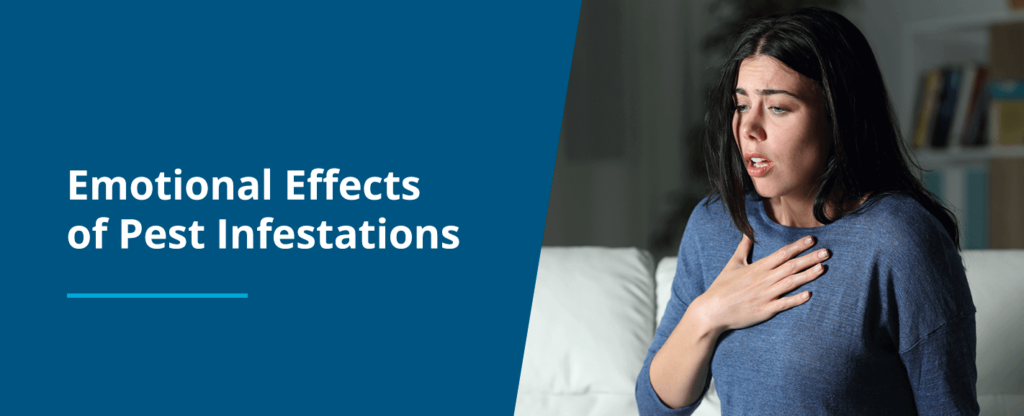A Biased View of Eco Bed Bug Exterminators Dc
What Does Eco Bed Bug Exterminators Dc Mean?
Table of ContentsEco Bed Bug Exterminators Dc Things To Know Before You BuyThe 2-Minute Rule for Eco Bed Bug Exterminators DcEco Bed Bug Exterminators Dc - The Facts3 Simple Techniques For Eco Bed Bug Exterminators DcFascination About Eco Bed Bug Exterminators Dc
Due to the fact that chemicals are harmful, they are also possibly hazardous to humans, animals, other microorganisms, and the environment. Therefore, individuals who make use of chemicals or consistently come in contact with them should understand the loved one poisoning, potential wellness effects, and preventative steps to minimize exposure to the items they utilize. Threat, or risk, of making use of chemicals is the possibility for injury, or the level of danger associated with utilizing a chemical under an offered collection of conditions.
Nonetheless, applicators can minimize or virtually eliminate direct exposure-- and therefore lower risk-- by complying with the tag directions, utilizing personal safety clothing and equipment (PPE), and managing the chemical appropriately. More than 95 percent of all chemical exposures come from facial exposure, primarily to the hands and lower arms. By using a pair of unlined, chemical-resistant gloves, this type of direct exposure can be almost removed.
The harmful effects that happen from a solitary exposure by any type of route of entrance are termed "intense impacts." The 4 paths of exposure are dermal (skin), inhalation (lungs), dental (mouth), and the eyes. Acute toxicity is figured out by analyzing the dermal toxicity, breathing toxicity, and oral toxicity of examination pets.
The Facts About Eco Bed Bug Exterminators Dc Uncovered
Intense toxicity is gauged as the amount or concentration of a toxicant-- the a.i.-- required to eliminate half of the animals in an examination population. This action is typically expressed as the LD50 (deadly dose 50) or the LC50 (deadly concentration 50). Furthermore, the LD50 and LC50 values are based upon a single dosage and are taped in milligrams of chemical per kilo of body weight (mg/kg) of the guinea pig or partially per million (ppm).
The lower the LD50 or LC50 value of a chemical product, the greater its toxicity to people and animals. Pesticides with a high LD50 are the least harmful to humans if made use of according to the instructions on the item tag. The chronic poisoning of a pesticide is identified by subjecting examination pets to long-lasting direct exposure to the active ingredient.
The chronic toxicity of a chemical is extra challenging than intense poisoning to establish through lab evaluation. Products are categorized on the basis of their family member acute poisoning (their LD50 or LC50 worths). Pesticides that are identified as extremely poisonous (Poisoning Category I) on the basis of either oral, facial, or inhalation poisoning have to have the signal words risk and poisonous substance published in red with a head and crossbones sign plainly showed on the front panel of the bundle label.
The acute (single dosage) oral LD50 for chemical products in this team varies from a trace total up to 50 mg/kg. Exposure of a few drops of a product taken by mouth could be fatal to a 150-pound individual. https://qualtricsxmd592229pt.qualtrics.com/jfe/form/SV_b2yCBs28oDQPOZ0. Some chemical items have just the signal word risk, which informs you absolutely nothing about the intense toxicity, just that the product can create serious eye damages or extreme skin irritability
Eco Bed Bug Exterminators Dc - Truths
In this group, the severe dental LD50 varieties from 50 to 500 mg/kg. A tsp to an ounce of this material could be deadly to a 150-pound individual (pest control Washington DC). Pesticide products categorized as either somewhat toxic or relatively safe (Poisoning Classifications III and IV) are required to have the signal word care on the chemical label
.png)
All chemical toxicity worths, consisting of the LD50, can be found on the product's Product Safety Information Sheet (MSDS) - bed bug spray. Chemical labels and MSDS can be gotten from merchants or produces. Furthermore, a lot of products also have information that can be found on the web. The signs and symptoms of pesticide poisoning can vary from a moderate skin irritation to coma or also death.
People likewise differ in their level of sensitivity to various degrees of these chemicals. Some people might reveal no reaction to an exposure that might cause severe ailment in others (bed bug spray). As a result of potential wellness problems, pesticide users and trainers should identify the usual symptoms and signs of pesticide poisoning. The results, or signs, of chemical poisoning can be broadly specified as either topical or systemic.
4 Easy Facts About Eco Bed Bug Exterminators Dc Explained
Dermatitis, browse around this site or swelling of the skin, is approved as the most frequently reported topical impact connected with chemical exposure. Some people have a tendency to cough, wheeze, or sneeze when revealed to chemical sprays.
This symptom usually subsides within a few mins after an individual is removed from the exposure to the toxic irritant. A reaction to a pesticide item that creates someone not just to sneeze and cough yet additionally to develop extreme intense breathing signs is much more likely to be a real hypersensitivity or allergic response.
Systemic results are rather various from topical impacts. They frequently occur far from the initial point of contact as a result of the pesticide being soaked up into and distributed throughout the body. Systemic results commonly include queasiness, vomiting, exhaustion, frustration, and digestive problems. In innovative poisoning situations, the individual might experience modifications in heart rate, difficulty breathing, convulsions, and coma, which could lead to fatality.